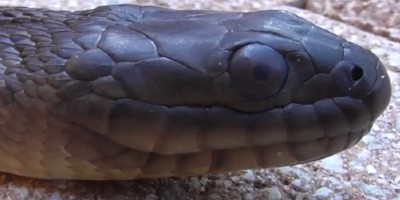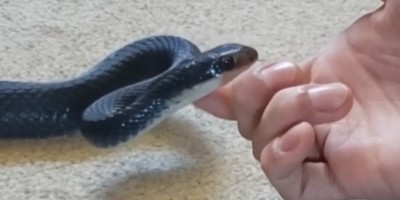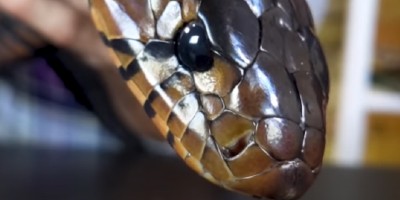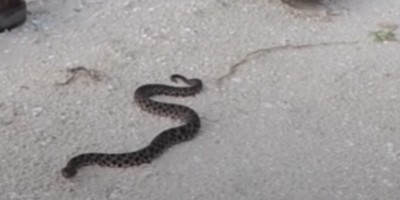
Welcome to westpalmbeachsnakes.com! I am David, a snake enthusiast living in West Palm Beach, FL. Many people don't know that West Palm Beach is in fact full of snakes! You just need to know where to find them - they can often be shy and elusive. Some Florida snake species are more common outside of the city limits, in different parts of Palm Beach County FL, but many types of snakes are indeed common in the more urban parts of West Palm Beach. This guide is meant to help educate you about the beautiful snakes of West Palm Beach, and to help you identify the most common snakes of West Palm Beach, as well as the venomous snakes of West Palm Beach that you should learn to recognize and avoid. If you want more detail, click here for my complete list of ALL snake species in West Palm Beach. Remember the following:
- Most snakes of West Palm Beach are harmless and don't want to encounter you
- Venomous snakes exist but are uncommon in West Palm Beach, Florida
- Snakes eat rats and mice and are a valuable part of the Florida ecosystem
- Never kill a snake - if you leave a snake alone, it will leave you alone.
Common Snake Species in West Palm Beach
 Florida water snake:
The Florida water snake is a sub species of southern water snake. Towards the back of its surface, the Florida water snake is light brown or sometimes yellow with dark crossbands from red to black. When you observe the snake ventrally, it is in lighter colors such as yellow and white which is dominated by dark markings of black or red/brown colors. In adult Florida water snakes, the colors on their lower sides are somewhat darker than the patterns of crossbands which makes the body appear blotched. The Florida water snake is different from other species of southern water snakes primarily in their markings on the backside.
Florida water snake:
The Florida water snake is a sub species of southern water snake. Towards the back of its surface, the Florida water snake is light brown or sometimes yellow with dark crossbands from red to black. When you observe the snake ventrally, it is in lighter colors such as yellow and white which is dominated by dark markings of black or red/brown colors. In adult Florida water snakes, the colors on their lower sides are somewhat darker than the patterns of crossbands which makes the body appear blotched. The Florida water snake is different from other species of southern water snakes primarily in their markings on the backside.
 Northern black racer:
The northern black racer is a fairly large snake that measures between 30 to 65 inches. The northern black racer has a very dark, smooth, and cylindrical body. Like some snakes it does not have keeled scales, rather the scales appear smooth making the snake's body look matte clear. Northern black racer snakes are dark black, however, when the snakes are young, they have a greyish brown body along with dark blotches on their skin, these blotches along with the color of the snake matures into a uniform black shade which is visible on all adult northern black racer snakes.
Northern black racer:
The northern black racer is a fairly large snake that measures between 30 to 65 inches. The northern black racer has a very dark, smooth, and cylindrical body. Like some snakes it does not have keeled scales, rather the scales appear smooth making the snake's body look matte clear. Northern black racer snakes are dark black, however, when the snakes are young, they have a greyish brown body along with dark blotches on their skin, these blotches along with the color of the snake matures into a uniform black shade which is visible on all adult northern black racer snakes.
 Eastern indigo snake:
The eastern indigo snake is a very large snake ranging from 60 inches to 84 inches. It is usually black and is the longest snake with its origin in the United States. It has a shiny body in a bluish-black color. The chin along with its sides is not uniformly colored with its body and instead it is orangish brown. When eastern indigo snakes are young, they have more red pigmentation on their bodies, mostly on their heads, which fades over time as they grow up. Eastern indigo snakes are mostly active during the daytime.
Eastern indigo snake:
The eastern indigo snake is a very large snake ranging from 60 inches to 84 inches. It is usually black and is the longest snake with its origin in the United States. It has a shiny body in a bluish-black color. The chin along with its sides is not uniformly colored with its body and instead it is orangish brown. When eastern indigo snakes are young, they have more red pigmentation on their bodies, mostly on their heads, which fades over time as they grow up. Eastern indigo snakes are mostly active during the daytime.
Venomous Snake Species in West Palm Beach
 Coral snakes:
Coral snakes are venomous snakes that are found in West Palm Beach. They have prominent bands on their body of colors such as red, white, yellow, and black. The color of the bands may differ from region to region and varies accordingly. When it comes to their size, it varies as well but the majority of the snakes are small. The average size is around 91 cm while some coral snakes can be as big as 150 cm. They lay around 2-7 eggs at a time and can live up to 7 years in captivity. These snakes are very elusive so some mating and breeding facts remain unknown.
Coral snakes:
Coral snakes are venomous snakes that are found in West Palm Beach. They have prominent bands on their body of colors such as red, white, yellow, and black. The color of the bands may differ from region to region and varies accordingly. When it comes to their size, it varies as well but the majority of the snakes are small. The average size is around 91 cm while some coral snakes can be as big as 150 cm. They lay around 2-7 eggs at a time and can live up to 7 years in captivity. These snakes are very elusive so some mating and breeding facts remain unknown.
 Pygmy rattlesnake:
The pygmy rattlesnake is a poisonous snake that is around 1 to 1.5 feet long even though some extend to as much as 2.5 feet. They have very thick skin which is greyish. The pygmy rattlesnake has rows of blotches on its back and sides which are usually irregular and dark gray or black. The blotches on the side and at the back vary as the ones on the back are pretty dark and have red/brown stripes going down the body that separates it from the dark blotches on the side. One thing that stands out is the dark bands that are visible reaching the jaw from each eye's corner. As it is a rattlesnake, it has a rattle at the end of its tail. It has keeled scales and instead of laying eggs, it gives birth to young ones. Pygmy rattlesnakes are venomous snakes that are often encountered by people.
Pygmy rattlesnake:
The pygmy rattlesnake is a poisonous snake that is around 1 to 1.5 feet long even though some extend to as much as 2.5 feet. They have very thick skin which is greyish. The pygmy rattlesnake has rows of blotches on its back and sides which are usually irregular and dark gray or black. The blotches on the side and at the back vary as the ones on the back are pretty dark and have red/brown stripes going down the body that separates it from the dark blotches on the side. One thing that stands out is the dark bands that are visible reaching the jaw from each eye's corner. As it is a rattlesnake, it has a rattle at the end of its tail. It has keeled scales and instead of laying eggs, it gives birth to young ones. Pygmy rattlesnakes are venomous snakes that are often encountered by people.
If you're unsure, you can email me a photo of the snake at info@westpalmbeachsnakes.com and I will email you back with the snake's species. If you found a snake skin, read my Found a Skin? page, and you can email me a photo of the skin, and I'll identify the snake for you. If you need professional West Palm Beach snake removal help, click my Get Help page, or see the below website sponsor I found, who provides that service.
Remember, the term is not poisonous snakes of West Palm Beach, it's venomous snakes of West Palm Beach. Poison is generally something you eat, and venom is injected into you. That said, dangerous snakes are very rare in West Palm Beach. The few venomous snakes of Palm Beach County are rarely seen. But they are commonly misidentified, so learn about all the snake species of West Palm Beach in order to correctly identify them. These snakes are usually also found in the surrounding towns of Boca Raton, Delray Beach, Palm Beach Gardens, Jupiter, Boynton Beach, Lake Worth, Palm Springs, Wellington, Royal Palm Beach, North Palm Beach, Riviera Beach, Belle Glade, Juno Beach, Greenacres, Lantana, Tequesta, Palm Beach Shores, South Palm Beach, Loxahatchee Groves, Lake Park, Pahokee, Manalapan, Hypoluxo, Highland Beach, Atlantis, Ocean Ridge, Haverhill, The Acreage, Mangonia Park, Jupiter Inlet Colony, Lake Clarke Shores, Gulf Stream, and the surrounding areas.
Read our article about:
Can Snake Climb Trees
westpalmbeachsnakes.com domain and hosting costs made possible by the generous support of this sponsor:
